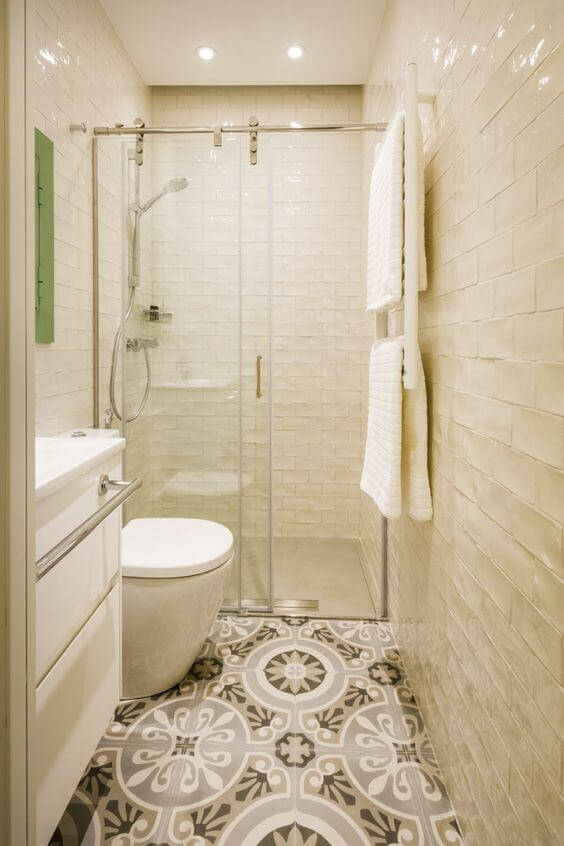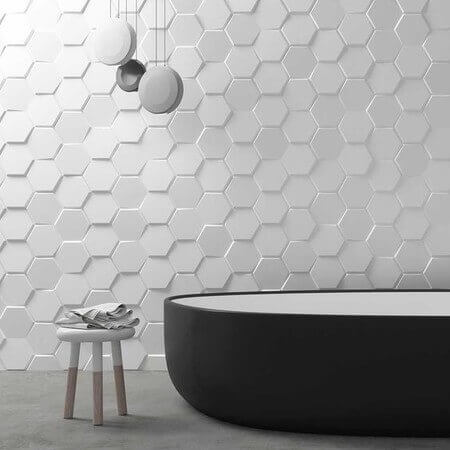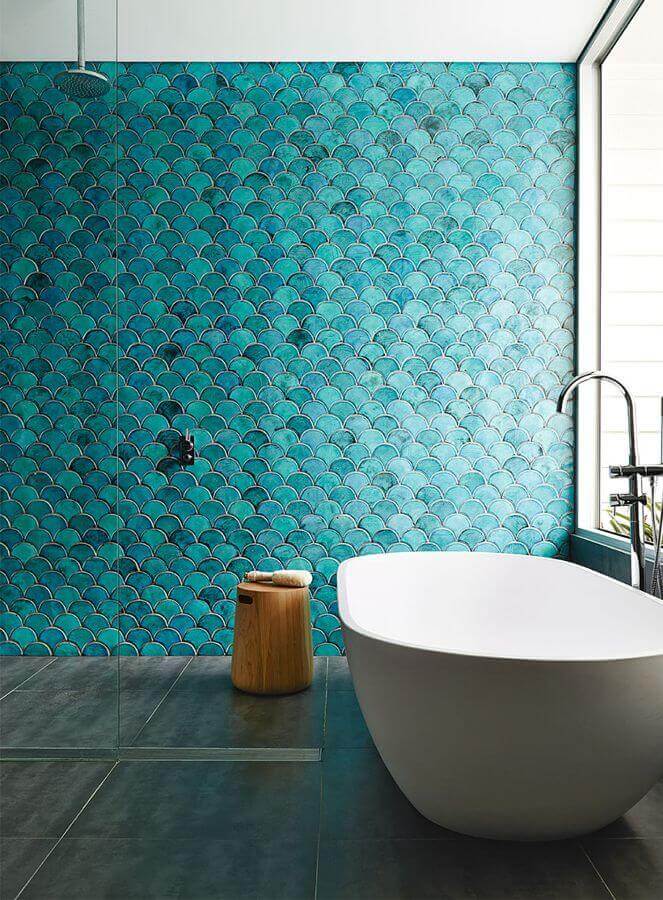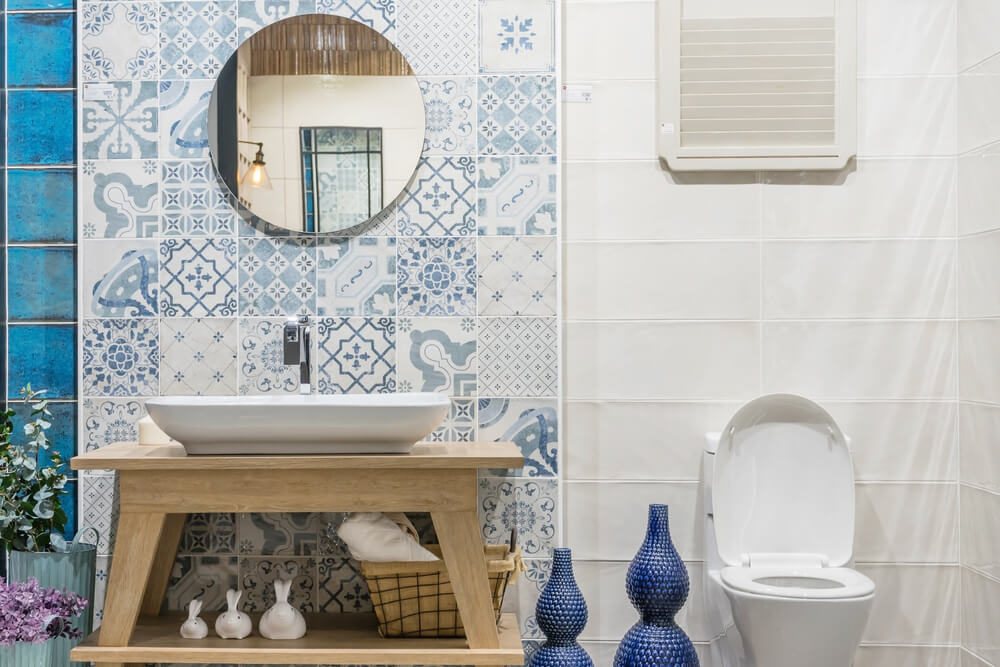Check Out These 4 Texture Types for Your Bathroom

When updating the bathroom, you can use tiles with texture to bring brightness and make the environment more dynamic. We’re going to look at 4 texture types.
Interior design isn’t just limited to the objects and resources you use to decorate. Neither is it limited to the colors that you use for the furniture and walls. It’s important to note the relevance of the floor tiles. So we’re going to consider 4 texture types in the bathroom.
If you want to give a particular personality to this part of the house, you have to learn about the different ways to cover the walls. Of course, color plays a decisive role, but it also influences the appearance of the material.
Touch and sight play fundamental roles when perceiving the decor of a space. In this case, the textures give us a certain sensory perception. It adds sophistication and originality.
Bathroom tiles – roughness as an original principal

Image: pinterest.es
One of the textures that you see more of are rough-textured tiles in decor. In this case, there’s an optimal attractive effect because it’s different from what you commonly see in homes.
Another quality is naturalness. Also, with these tiles, a back light is produced. This means that lights and shadows take prominence on the walls, making the atmosphere more dynamic and becoming a captivating focus of the decor.
There are many types of roughness, from geometric shapes to those that show a certain superficial irregularity. One type tries to show nature as if they were stones from a field.
The variety of bathroom tiles offers many possibilities.
Geometric tiles for the bathroom – one of the texture types

Image: pinterest.es
In the decor field, there are many typologies. Notably, they demonstrate a systemic organization of the walls. As a result, the optimal effect is pleasant and modernizes the bathroom. Let’s look at 4 interesting models.
1.Rectangles are the most repeated pattern. So we’re going to highlight one in particular that imitates brick but in white with a rough surface that reflects stability.
2. As for the pentagons, hexagons, and octagons, you can find them with smooth surfaces or with relief in each piece or on the lateral lines. Also, they produce a light and shadow effect.
3. Squares are very common. They usually go very well with walls that are only half-covered with tiles. You can also see them in large blocks and mosaic format with large or small spaces between each tile.
4. Special mention needs to be made for pillow geometric tiles, of which the shape isn’t the main feature. But it’s the elevation of the tile that gives a feeling of softness. This is an optimal effect that gives us comfort and a calming effect.
Glazed Ceramics – bright and shiny

Image: pinterest.es
One of the materials that allow for a dazzling look is glazed ceramics. The Muslims in the Middle Ages resorted to this to decorate the interiors of palaces for the aesthetic effect it produced.
Needless to say, you’ll have a more brilliant appearance that pops, especially if there’s a window that allows natural light inside. You’ll achieve a more lustrous and modern appearance.
The external texture is more or less smooth. The brightness gives a feeling of purity. This enhances the perception of hygiene, especially if you use colors such as white, turquoise, sky blue, etc.
Glazed ceramics have been used throughout history
Stenciled and patterned bathroom tiles – another texture type

Generally, interior designers tend to use plain colored tiles and combine them with the surrounding colors to harmonize the spaces chromatically. However, there’s also the option to use stenciled or patterned tiles to support the theme.
This typology, called maiolica, can have a rough texture that follows the same pattern as the pattern itself. It doesn’t have to stand out much but offers a light ornamental relief creating a little chiaroscuro.
As you can see, there are many different texture types for bathroom tiles. If you’re not sure, visit a specialty store to mull over the tile selection to choose tiles that adapt to your style.
All cited sources were thoroughly reviewed by our team to ensure their quality, reliability, currency, and validity. The bibliography of this article was considered reliable and of academic or scientific accuracy.
- Bosch, Montse; Escolar, Silvia; del Portal, María: Pavimentos. Nuevos revestimientos, Barcelona, UPC, 2002.








